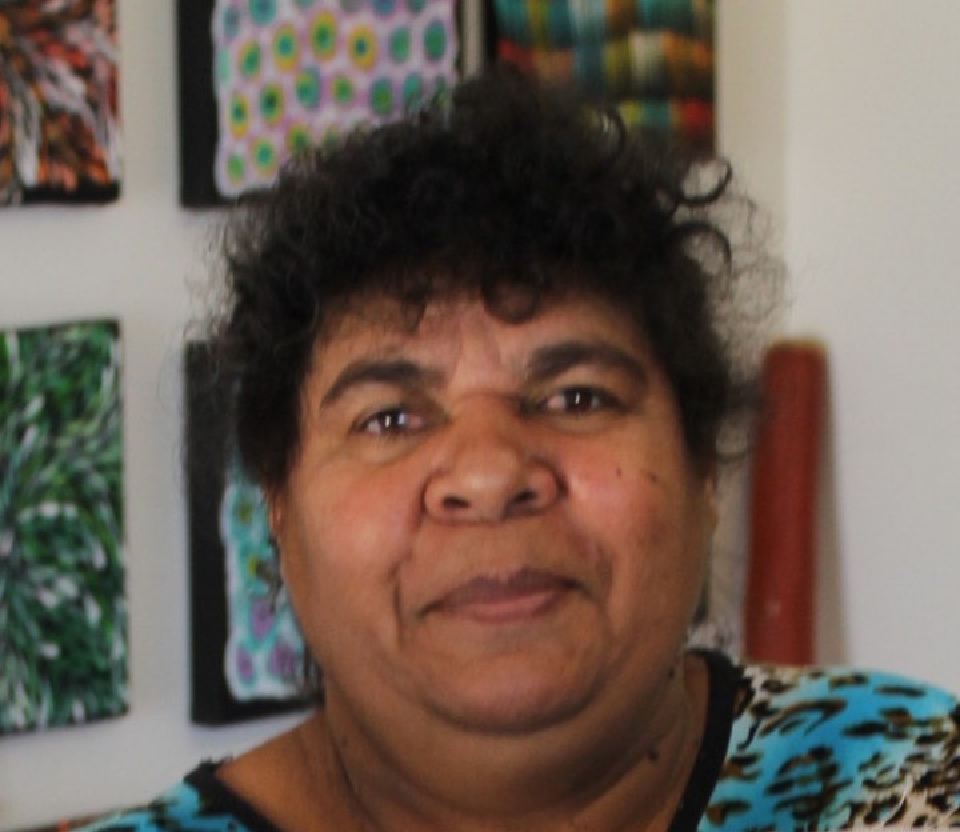Jorna Newberry

DOB:
1959
Born:
Angus Downs, NT
LANGUAGE GROUP: Pitjantjatjara
COMMUNITY: Alice Springs, NT
Jorna Newberry is a Pitjantjatjara artist who was born around 1959 in Angus Downs. She currently splits her time between Alice Springs, where her family live, and Warakurna choosing to live between modern culture and a more traditional one of her Indigenous heritage.
When Jorna is in her lands, she often goes bush with the women of the community for sacred ceremonies, passing on the knowledge of her heritage onto her two daughters. When she goes camping, she hunts for kangaroo and goanna and collects bush tucker such as honey ants, witchetty grubs and berries.
Her style is multi-layered and abstract to maintain the secrecy of important culture matters. She has worked closely with her Uncle, Tommy Watson and developed her own style.
"Tommy has had a big influence on me. He teaches me to be respectful in the way I paint" she says, favouring a more abstract approach to her work rather than the figurative approach of the Papunya Tula artists.
Jorna initially started painting in the mid-1990s at Warakurna. Her paintings refer to the country of Irrunytju in the Western desert and the significant places, traditionally of spiritual knowledge and the ancestral stories, which are in bedded in the land.
Tommy Watson has described Irruntyju as, "My grandfather's country, grandmother's country. When they were alive, they would take me around the country, when I was a kid. That dreamtime country. That's why we look after the country, go out whenever we can, see if the rock-holes are good".
Tjukurpa (Wind Dreaming) is a story of her mother's country at Utantja, a large stretch of sacred land where people go for ceremonial rites. "The wind ceremony forms winds, creates air to cool the lands," she says, explaining that the cooler the land gets, the easier it is for hunting.
Newberry uses a very vibrant and dramatic palette in her artworks; the canvases are alive with linear dotted flows that describe movement, culture and history.
